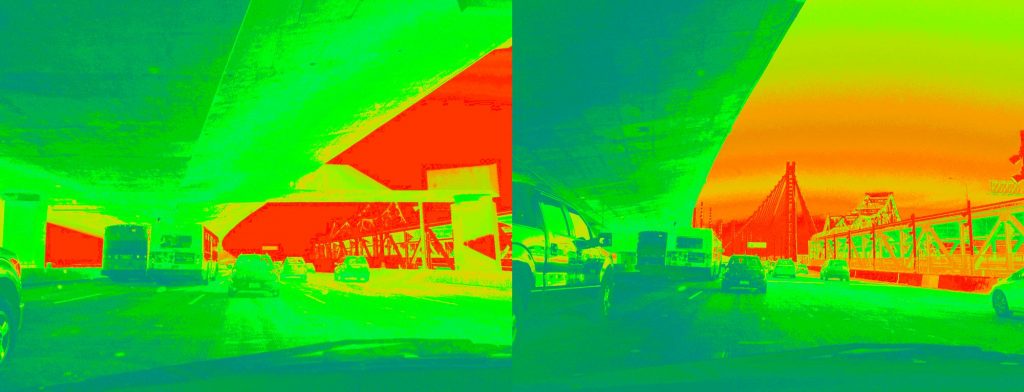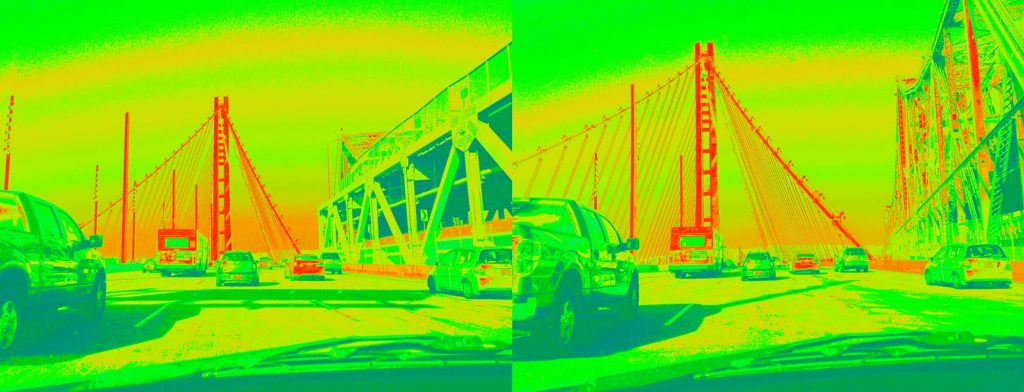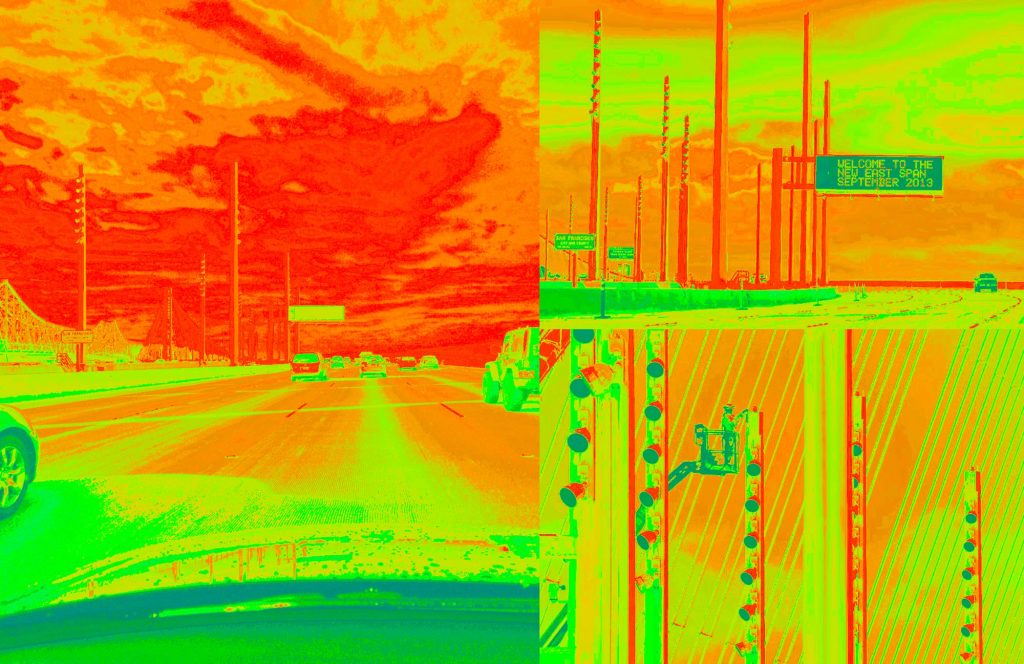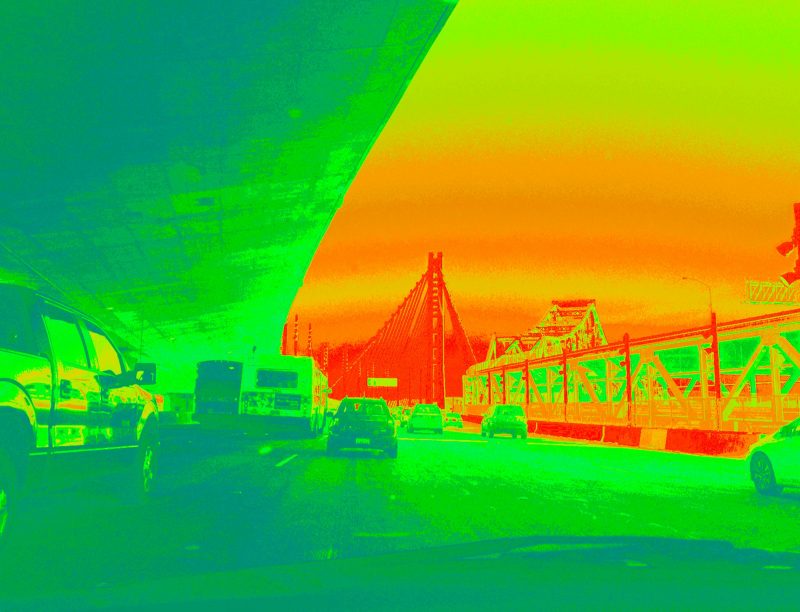Phenomenology & Formality: a critical commentary
Case Study: The New East Span of the Bay Bridge
We’ve been talking with our friends and colleagues and it seems that there is general agreement that the best experience of the new East span of the Bay Bridge comes as you travel east through the Yerba Buena Island tunnel. The approach is along the lower deck of the old west span where you are prepared by the staccato rhythm of beams, girders and chevrons overhead. These give way to the concrete beam roof in the tunnel itself which, then, transitions to the smooth, cast concrete undercarriage of the upper deck of the new span. This is where dynamics, the phenomenology of space and experience come into play.

As you leave the tunnel the upper deck peels away curving subtly to the North to reveal the monumental, white tower. The tower, actually a cluster of four columns, bound together by seven “link beams,” is at its most dramatic here, appearing immediately and at full scale within the normal range of vision, it is more vertical, most imposing, white, striking and elegant from this vantage. That impression is set up by the approach and the curved movement of the upper deck. The entire experience is based on high speed travel as it relates to physical form. 
More than the formal elegance of the tower itself, described by the Architect, Donald Macdonald, in his book Bay Bridge, History and Design of a New Icon, it is the serial experience that really makes the impression. The critic Mitchell Schwarzer described this cinematic experience of space in his book Zoomscape. “In this thought-provoking book, he argues that the perception of architecture has been fundamentally altered by the technologies of transportation and the camera.” Here time and movement are the fourth dimension and they are employed as tools for understanding and, potentially, for defining design. As realized through the windshield at fifty five miles per hour the verticality of the tower is made more present by the curving sweep of the roadway surface, which is itself a product of the perception of a traveler moving through space. The proportion and the component parts of the tower are made more precise by their relationship to the monolithic, subtly beveled underside of the elevated roadway.
Unfortunately, there is a contrasting experience when travelling the bridge from East to West. Passing through the tolls on the Oakland shoreline, the tower is barely visible in the distance. The actual length of the viaduct, the physical distance, is a part of the issue, but the bigger problem is the architecture, which works against the potential experience of an east to west trip across The Bay.

The particular problem is the design of the light standards. These objects are highly aestheticized miniatures of the tower itself. They are formal by-products, “Key elements from the tower come off the structural system onto the other features of the main span and viaduct.” (p 78) There are illustrated diagrams that detail the geometric and proportional similarities and “the progression of the light fixtures from the East Oakland touchdown to the tower of the main span.” The logic is clear and there is ample precedent for making design decisions in this fashion. The problem is that the experience is lost in the mix. The light standards obscure the main tower and undermine the experience of the bridge.
I make these points, not only as a critique of the bridge, but also as a commentary on design and process relative to the “zoomscape.” The experience of traveling the bridge serves to underscore important issues about how architecture is conceptualized, taught, and ultimately experienced. We have shied away from design that is premised in experience, because we lack the tools, both the representational and critical tools, to describe and discuss design as experience. The visual is prioritized, and has been since the advent of classical ordering systems. We are trained to study form by graphic composition, so much of the dialogue is carried out in two-dimensional media, drawings, photographs, magazines and the internet. Even three dimensional models, whether real or virtual oftentimes represent “privileged views,” without providing cognitive access to the experience of the proposal. Perhaps we need to find other ways of representing our ideas; sound recordings, animated films, immersive environments, so that we can study and design from a dynamic vision of space and spatial experience. We make physical objects, but not as an end, it is their use, inhabitation, or occupation that is the intended goal. They are inhabited over time, by occupants who move and change their point of view. Just bearing this in mind, designing as much with the gut as with the eye will yield tangible results. If we can embed this understanding in our process and methodology, we will be that much further down the proverbial road.

